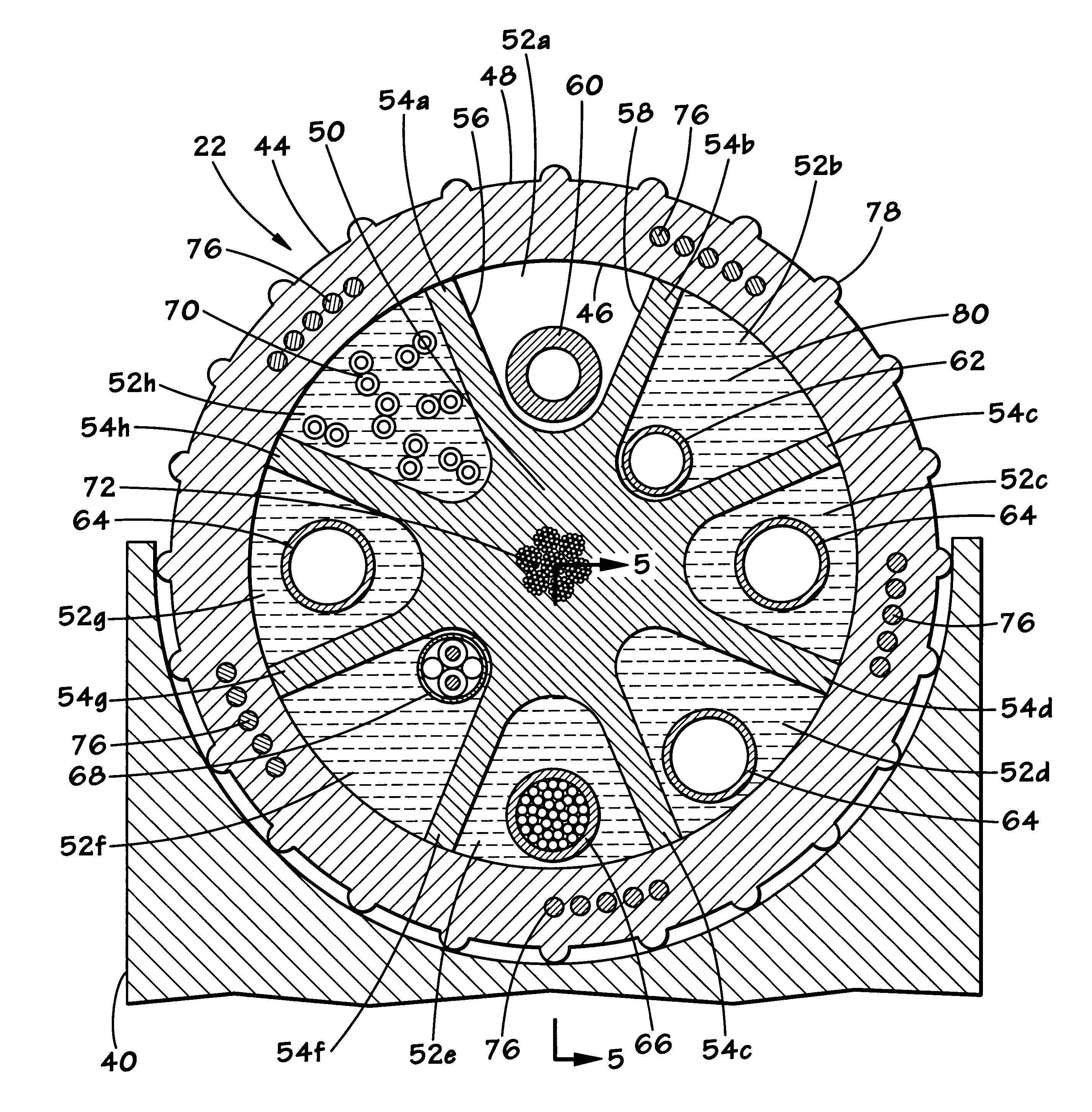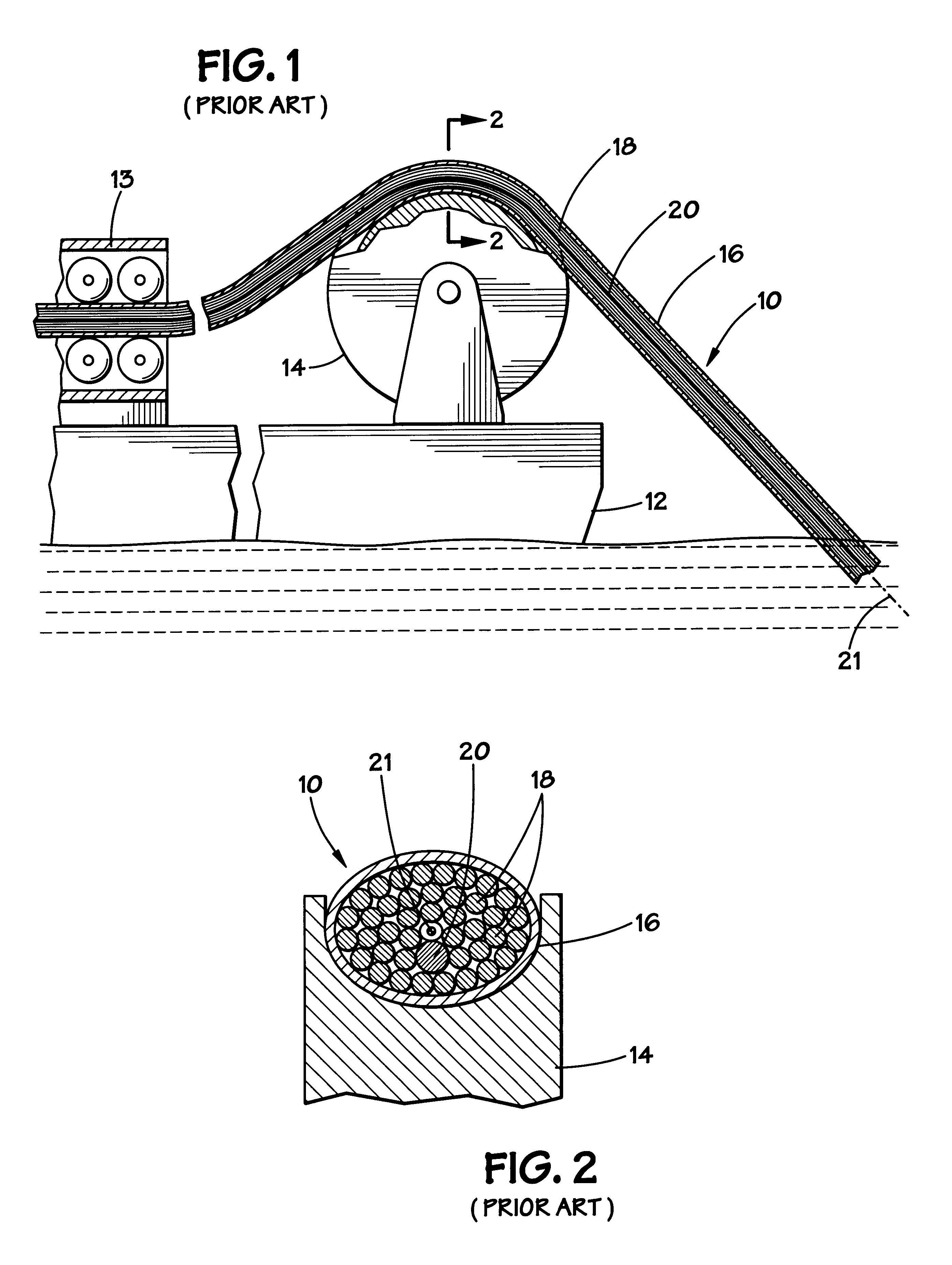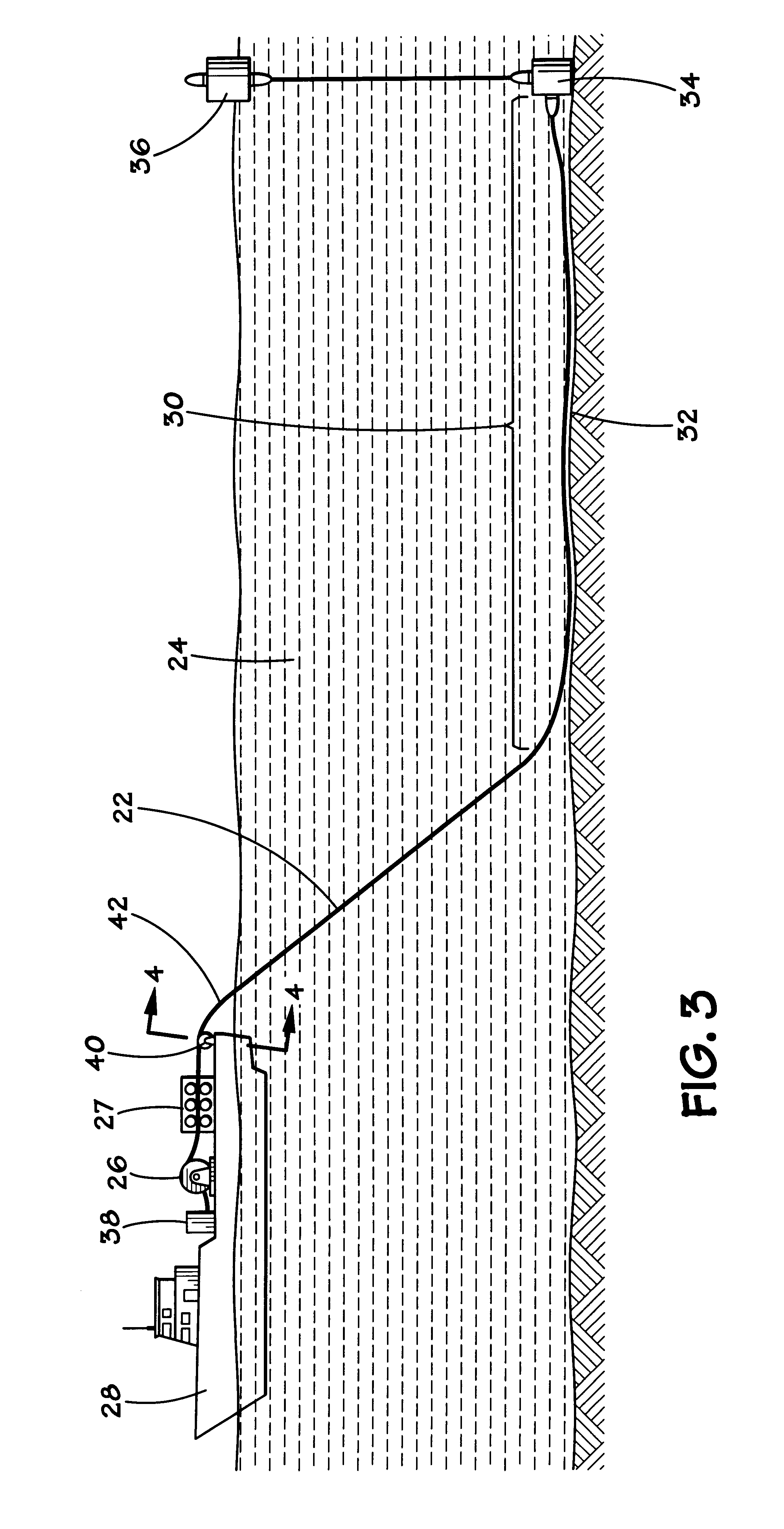Variable buoyancy cable
- Summary
- Abstract
- Description
- Claims
- Application Information
AI Technical Summary
Problems solved by technology
Method used
Image
Examples
Embodiment Construction
In the drawings described below, reference numerals are generally repeated where identical elements appear in more than one figure. FIG. 1 is a side view of a portion of an exemplary conventional seismic cable 10 that is deployed from a vessel 12. The cable 10 is deployed and retrieved from the vessel 12 with the aid of a linear cable engine 13 and a sheave 14 that is rotatably coupled to the vessel 12. Referring now also to FIG. 2, which is a sectional view of FIG. 1 taken at section 2--2, the cable 10 includes a flexible external jacket 16 that encloses a plurality of conductors 18. The conductors 18 are typically individually insulated conductor wires and cables, but also include such things as fiber optic cables and even fluid lines. The cable 10 undergoes significant tensile forces during deployment, retrieval and towing operations. Accordingly, a strength member 20, normally a wire rope or cable, is positioned inside the outer jacket 16 and nested among the conductors 18 along...
PUM
 Login to View More
Login to View More Abstract
Description
Claims
Application Information
 Login to View More
Login to View More - R&D
- Intellectual Property
- Life Sciences
- Materials
- Tech Scout
- Unparalleled Data Quality
- Higher Quality Content
- 60% Fewer Hallucinations
Browse by: Latest US Patents, China's latest patents, Technical Efficacy Thesaurus, Application Domain, Technology Topic, Popular Technical Reports.
© 2025 PatSnap. All rights reserved.Legal|Privacy policy|Modern Slavery Act Transparency Statement|Sitemap|About US| Contact US: help@patsnap.com



